#alive the story of the andes survivors
Text

With all the death and avalanches and starvation and cannibalism I sometimes forget just how young these guys were. And then I get blasted with something like this.
#non fiction#alive the story of the andes survivors#roberto canessa#nando parrado#uruguayan air force flight 571#miracle in the andes#iphi.post#bookblr#words words words#booklr#20y/os gonna 20y/o i guess
67 notes
·
View notes
Photo
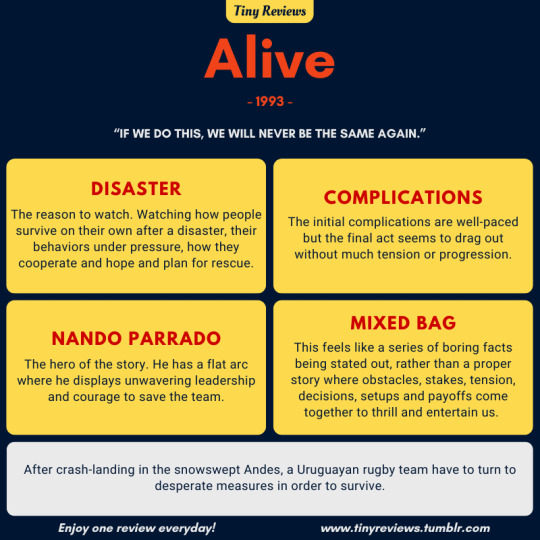
In real life, this would be an exciting story. But is it exciting enough to make a movie of it? Biography disease strikes this one, just like all the rest.
Alive is a 1993 American biographical survival drama film based on Piers Paul Read's 1974 book Alive: The Story of the Andes Survivors, directed by Frank Marshall, written by John Patrick Shanley, and narrated by John Malkovich. It features an ensemble cast including Ethan Hawke, Josh Hamilton, Vincent Spano, Bruce Ramsay, John Haymes Newton, Illeana Douglas, and Danny Nucci.
#alive#john malkovich#ethan hawke#josh hamilton#vincent spano#bruce ramsay#john haymes newton#illeana douglas#danny nucci#biography#survival drama#alive the story of the andes survivors#disaster movie#1993#movie review
6 notes
·
View notes
Text
“Oh, God," he prayed once again, "by all means test us to the limit of our endurance, but please make it humanly possible to go on."
Alive: The Story of the Andes Survivors, Piers Paul Read
#books i read in 2024#alive#alive: the story of the andes survivors#piers paul read#miracle in the andes#andes plane crash#hard to pick a quote for this one that wasn't overtly about cannibalism#as many of the most harrowing quotes are
0 notes
Text
" The society of the snow " is not a remake of " Alive ". Fist is a real story about Uruguayan people who lost in the Andes Everest. Alive have some parts that are more accurate that the new movie, but are little ones, like avalanche when they sleep, and the shoes part. Other ones are pure fantasy. They don't sepeak, don't act and don't look like us ( Uruguayan ppl). But the new movie have latino Rioplatense actors ( almost Argentinan), and the major rol is play by a Uruguayan. Even the survivors play little roles in the film.
In Uruguay we are only 3 million ppl so or media and audiovisual are not development at all, so is a good decision to have a director from Spain.
My only complaint, I would have included more Uruguayan actors. "Numa" played by Enzo Vogrincic is a Uruguayan theater actor, and have a high level, for sure are others actors waiting for that big chance. Actually I'm happy that he has a good reception.
Sorry for my bad English.

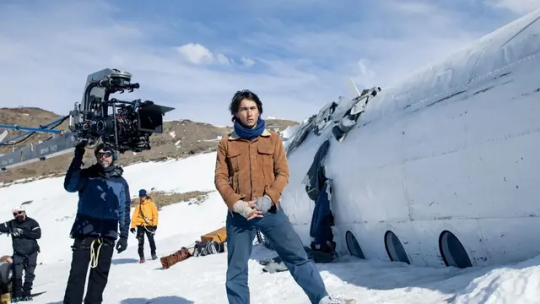
#alive#society of the snow#la sociedad de la nieve#alive remake#uruguay#numa turcatti#enzo vogrincic#andes#viven#netflix#the society of the snow
397 notes
·
View notes
Note
i recently watched the movie and started randomly watching interviews of both the actors and survivors and i found this interview Roberto gave on an uruguayan morning show (which actually goes on more about how he’s doing in his present life, but talked about the disaster a little bit) where he tells the story of how apparently his father found out about his survival from a cab driver which i found so incredible i would’ve loved to see it in the movie 😭 imagine your son has been missing forever and you’re in argentina in a shit mood and a shit trip and suddenly the cab driver is like “did you see they found the kids who landed in the Andes alive? some guys named Canessa and Parrado” it must have been so damn powerful.
Yes!! Roberto’s father (Juan Carlos) did find out his son was alive while on a taxi in Buenos Aires. He was on his way to his cousin’s place after several frustrated attempts to locate the wreckage and the boys, in which he was joined by Roy’s father, Carlitos’ father, Coco’s father and also the father of Laura Surraco (Roberto’s girlfriend and now wife).
The next day he was going back to Uruguay, completely defeated.
The taxi driver was like “did you hear about the Uruguayan plane?”. The plane he and the other fathers were in malfuctioned at least three times in the process, which forced at least two emergency landings, so at first he thought the taxi driver was referring to that and he was like “wait how did you know?”
Then the taxi driver said that two of the Uruguayan rugby players who vanished in the Andes had been found alive and turned up the radio.
When Juan Carlos heard “Canessa” he cried, hugged and kissed the taxi driver. In the following years, whenever he was back in Buenos Aires, he tried in vain to locate that driver. He doesn’t even know his name.
Just one of many incredible details of this story.
95 notes
·
View notes
Text






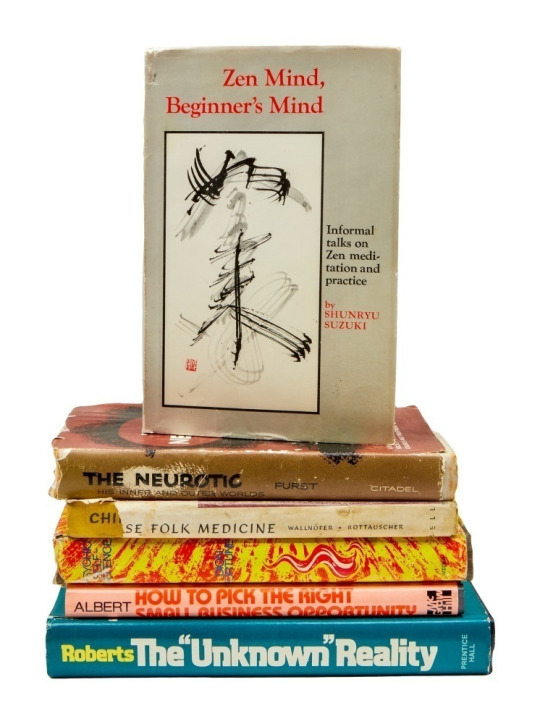
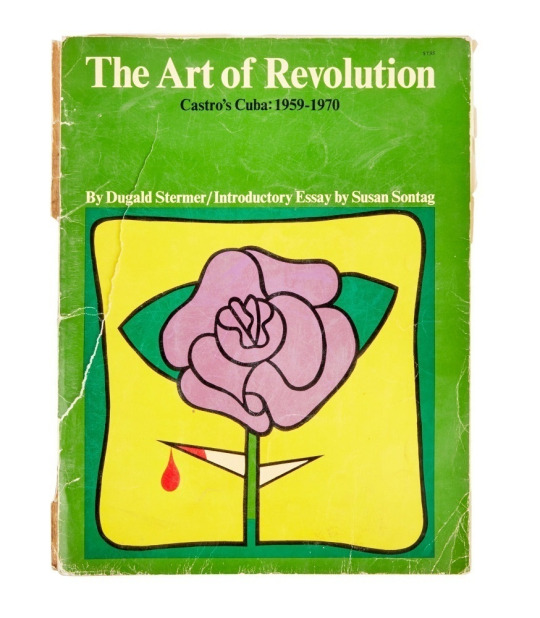
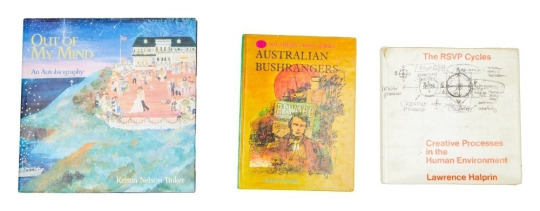
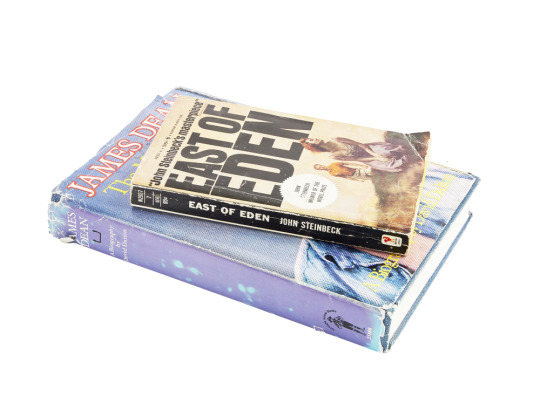





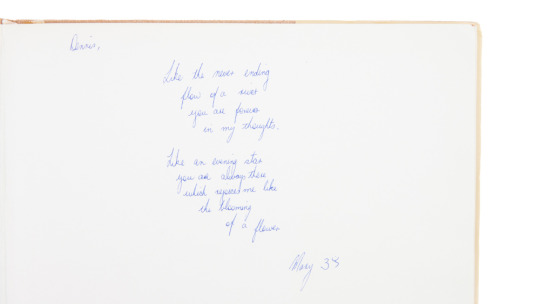
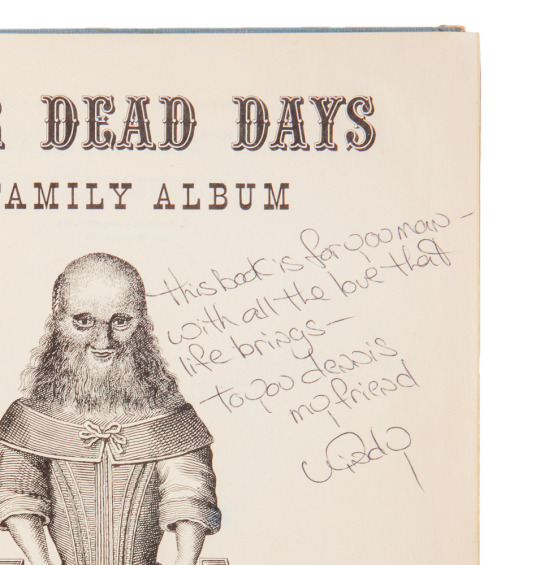
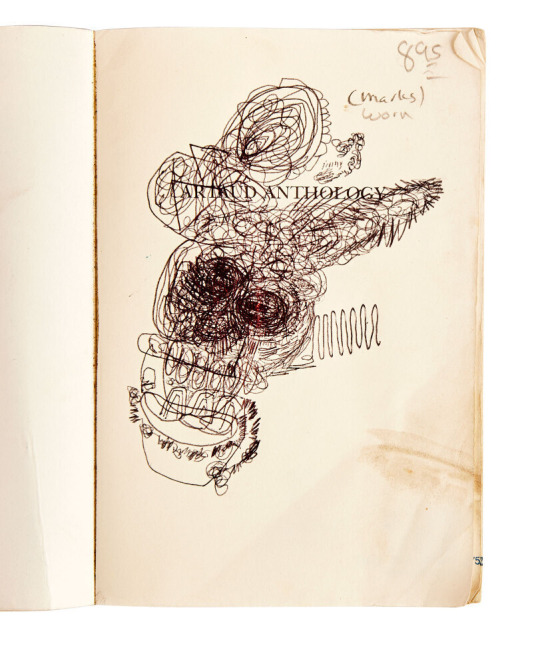
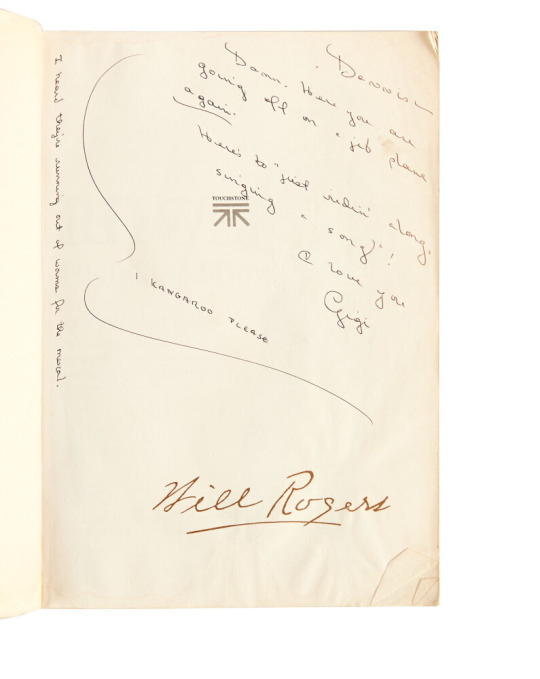
Dennis Hopper's collection of owned and gifted books
(a few are listed under the cut)
Islands in the Stream (Charles Scribner's Sons, 1970)
Magic (Delacorte Press, 1976)
Sneaky People (Simon and Schuster, 1975)
Strange Peaches (Harper's Magazine Press, 1972)
I Didn't Know I Would Live So Long (Charles Scribner's Sons, 1973)
Baby Breakdown (The Bobbs-Merrill Company, Inc., 1970)
37 (Holt, Rinehart and Winston, 1970)
Presences: A Text for Marisol (Charles Scribner's Sons, 1970)
Little Prayers for Little Lips, The Book of Tao, The Bhagavadgita or The Song Divine, and Gems and Their Occult Power.
Lolita (G.P. Putnam's Sons, 1955)
The Dramas of Kansas (John F. Higgins, 1915)
Joy of Cooking (The Bobbs-Merrill Company, 1974)
The Neurotic: His Inner and Outer Worlds (First edition, Citadel Press, 1954)
Out of My Mind: An Autobiography (Harry N. Abrams, Inc., 1997)
The Savage Mind (University of Chicago Press, 1966)
Alive: The Story of the Andes Survivors (J.B. Lippincott Company, 1974)
The Documents of 20th Century Art: Dialogues with Marcel Duchamp (Viking Press, 1971)
The Portable Dorothy Parker, A Portrait of the Artist as a Young Man, I Ching, and How to Make Love to a Man.
John Steinbeck's East of Eden (Bantam, 1962)
James Dean: The Mutant King (Straight Arrow Books, 1974) by David Dalton
The Moviegoer (The Noonday Press, 1971)
Erections, Ejaculations, Exhibitions and General Tales of Ordinary Madness (City Light Books, 1974)
Narcotics Nature's Dangerous Gifts (A Delta Book, 1973)
The Egyptian Book of the Dead (Dover Publications, 1967)
Tibetan Yoga and Secret Doctrines (Oxford University Press, 1969)
Junky (Penguin Books, 1977) by William S. Burroughs
Weed: Adventures of a Dope Smuggler (Harper & Row, 1974)
Alcoholics Anonymous (Alcoholics Anonymous World Services, 1976)
Skrebneski Portraits - A Matter of Record, Sketchbooks of Paolo Soleri, and High Tide.
Raw Notes (The Press of the Nova Scotia College of Art and Design, 2005)
Le Corbusier (Heidi Weber, 1965)
Henry Moore in America (Praeger Publishers, 1973)
Claes Oldenburg (MIT Press, 2012)
Notebooks 1959 1971 (MIT Press, 1972)
A Day in the Country (Los Angeles County Museum of Art, 1985)
Album Celine (Gallimard, 1977)
A Selection of Fifity Works From the Collection of Robert C. Scull (Sotheby Parke Bernet, Inc. 1973)
Collage A Complete Guide for Artists (Watsun-Guptill Publications, 1970)
The Fifties Aspects of Painting in New York (Smithsonian Institution Press, 1980)
A Bottle of Notes and Some Voyages (Rizzoli International Publications, 1988)
All Color Book of Art Nouveau (Octopus Books, 1974)
A Colorslide Tour of The Louvre Paris (Panorama, 1960)
Dear Dead Days (G. P. Putnam's Sons, 1959)
Woman (Aidan Ellis Publishing Limited, 1972)
The Arts and Man ( UNESCO, 1969)
Murals From the Han to the Tang (Foreign Languages Press, 1974)
A (Grove Press Inc., 1968)
Andy Warhol's Index Book (Random House, 1967)
Voices (A Big Table Book, 1969)
Another Country (A Dell Book, circa 1960s)
On The Road (Signet, circa 1980s)
56 notes
·
View notes
Text
trip updates part one: Tokyo
It was a mercifully smooth 12-hour flight from Minneapolis to Tokyo! The seat next to me was unoccupied, so I could stretch my legs out, sleep a bit, read, and watch my shows. I finished Black Friend by Ziwe, which I loved, and Alive: The Story of the Andes Survivors by Piers Paul Read. I also watched the first five episodes of Succession, season one! I'm so into this show.
It was so easy to navigate Tokyo via the subway. I took the train from the airport to my hotel, dropped my stuff off, and had time to visit Senso-ji Temple that evening. Visiting a religious site is something I like to do as soon after landing as possible. Senso-ji in the evening, lit up, was beautiful. I wandered through the temple grounds to look at the pagodas and the stone Buddha statues, while listening to the clinking of people dropping their coin offerings into the metal collection area. I found a little ramen spot nearby, and the ramen was incredible and very comforting after 12+ hours of travel, going through customs, navigating around a new city, etc.
The next day, I found a cute little cafe right next to my hotel where I could start my day with my caffeine fix. I headed to Tsukiji Market, and I LOVE a market. Normally I hate crowds, but when there's food involved, that hatred goes away. :) I explored the food stalls and ate all the seafood my little heart desired - crab legs, eel, scallops, a sashimi bowl.
I went to Meiji-Jingu shrine, in the middle of Yoyogi Park, which is very forested. One of the coolest things about this location was seeing a wedding ceremony that was taking place, with the couple and family dressed in traditional Japanese clothing. It was a lovely area to explore, and after I inevitably got lost in the park and found my way again, I had sakura flavored soft serve ice cream as a treat.
The Hamarikyu Gardens were an unexpected stop for me, while I waited for my evening kabuki show to start, and I'm so glad I went. The flower field there was yellow as far as my eyes could see, and there were tons of hummingbirds around.
The kabuki show was a cool experience - I loved the music, and the body language of the actors!
Other highlights of the rest of my time in Tokyo:
Matcha lattes and pancakes at the cafe near my hotel
Seeing cherry blossoms at Ueno Park!!
The collection of art and artifacts at Tokyo National Museum
The food - ramen, katsu curry, pho!
Soaking in the large, hot public bath at my hotel, which I had to myself that night.
One thing I didn't expect:
The weather! Coming from one of the coldest places in the United States, where it gets to be -30 F, I didn't think that Japan in spring would challenge me. And yet, it did. I brought my mid-weight spring coat, which has been working fine for me at home. For some reason, I found Tokyo very windy, and the wind cut right through me. I was very uncomfortable walking around, and finally, I had to buy another coat at Uniqlo here, as well as a scarf. I got both for ~$40 USD so it didn't break the bank, at least. :)
I got to Kyoto yesterday morning and I have more to journal about that, but I will do so in a separate post. :)
It has been amazing to be on vacation. To not have to worry about work, or grocery shopping, or cooking, or getting my workout done before work starts, or anything. I love my job and it still feels AMAZING to not work.
Oh, also, I almost forgot to add - I got an email as soon as I landed in Tokyo, confirming that I have been accepted at the university I applied for, and will be starting my MSW in fall. It's been a lovely celebratory trip!
24 notes
·
View notes
Note
Hi ☺️ I've recently found myself being super interested in the story of the tragedy/miracle of the andes (not sure how it's supposed to be called tbh) — do you maybe have some books to suggest that talk about that event? Possibly ones that have been translated into english or italian, because unfortunately... i don't know spanish 🙈 Thank you!
Hi! I'm very sorry for the delay.
The thing is, the Tragedy of the Andes is the sort of thing everybody here knows about, but not necessarily have read about it or can give you an extensive/intensive list?
That's me XD like, I remember stories my parents have told several times, like the psychic that told Páez Vilaró that his son was still alive, several weeks after the crash, and the shock at the news of their being found and the accidentally poetic "I come from a plane that fell on the mountain" quote. I haven't read about it, so I cannot recommend you anything first hand.
But Fernando Parrado and Roberto Canessa were, between the survivors, the most willing to talk about it since early on. Both gave lots of interviews (there used to be one on YT from... 1973? that was on a US tv program -they both were decent English speakers already- but the channel that uploaded it got nuked and it's lost).
Parrado wrote Miracle in the Andes: 72 Days on the Mountain and My Long Trek Home (2007), and Canessa, I Had to Survive: How a Plane Crash in the Andes Inspired My Calling to Save Lives (2016).
I know that Piers Paul Read's Alive was divisive between both survivors and """aficionados""". Some appreciate the thoroughness of the research, while others feel the account is morbid and laser focused on the material, mechanic aspect and underplaying the experiential/psychological/spiritual side. So on that one YMMV (that's the book the Alive! movie was adapted from).
That's all I can give :/
11 notes
·
View notes
Text
Photo credit to Roberto Canessa on Instagram (26/02/2024)

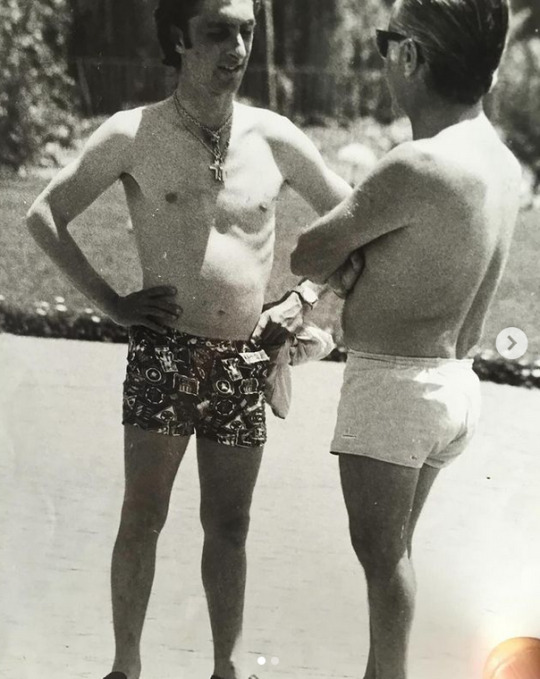
In honour of his fathers (Juan Carlos Canessa) birthday, Roberto uploaded the above images to his Instagram.
He wrote the following caption.
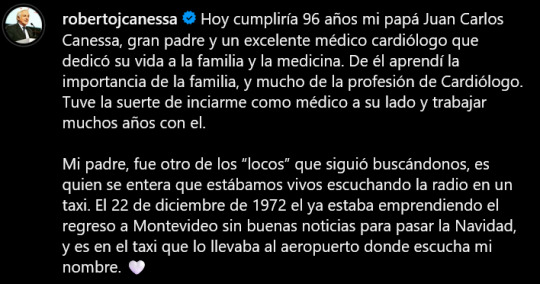

Loose English translation (Alt ID in Spanish):
Today my dad Juan Carlos Canessa would be 96 years old, great father and an excellent cardiologist who dedicated his life to family and medicine. From him I learned the importance of family, and a lot about the profession of Cardiologist. I was lucky enough to start as a doctor by his side and work with him for many years.
My father, was another of the "crazy people" who kept looking for us, he's the one who found out we were alive listening to the radio in a taxi. On December 22, 1972 he was already embarking on the return to Montevideo without good news to spend Christmas, and it is in the taxi that took him to the airport where he hears my name. 🤍
Happy birthday Dad, wherever you are 🙌🏻
--- Tangent about the caption under the cut ---
Roberto talks of the "taxi that took him to the airport where he hears my name", this is discussed in his book, I Had to Survive.
Please note I only own the English version of the book, so I am unable to give a Spanish version, my apologies.
His father writes -
I wanted to put this conversation to rest.
"Im the father of one of the boys whose plane crashed into the Andes. But the incident they're talking about yesterday happened to me, not to the boys. We're the ones who were the survivors. I'm one of them."
"You really don't know, do you?" the driver said, now animated as he looked at me through the rearview mirror. "They found two of the boys who were on the plane with the rugby players!"
"What are you talking about?" I found my voice was rising.
"It's all over the news!" the driver said as he flipped on the radio, "They're even naming the survivors!"
The first word I heard when he turned on the radio was his name.
"Roberto Canessa and Fernando Parrado are the two survivors who reached Los Maitenes," the announcer said.
The driver swerved and slammed the breaks as I broke down and lunged toward the front seat to hug and kiss him, yelling, "That's my son! That's my son!"
The driver and I jumped out of the car and hugged each other.
I began to cry as he hugged me tighter, then began to cry just as hard, right there in the middle of the road. I don't remember anything we talked about from that moment until we reached my cousin Gregorini's place; I was floating off somewhere else, crying along with the taxi driver who could barely drive he was crying so hard.
He continues on, but this passage in particular stood out to me -
I've thought a lot about that taxi driver, whose name I never learned, the man who gave me back my life just as I had given up.
Juan Carlos Canessa relayed this story on December 27, 2008, six months before his death. (Note given in: I Had to Survive)
#Book Credit: Roberto Canessa and Pablo Vierci. Translation credit: Carlos Frías#flight 571#roberto canessa#i really need to pick up the spanish versions. anyway#uruguayan flight 571#uruguayan history#uruguay flight 571#he posted this earlier this morning and i havent stopped thinking about it#one of the most moving parts of the book was that line from his father - “the man who gave me back my life just as i had given up”#i mean there's a LOT of moving parts in his book. obviously. but that always stood out to me
10 notes
·
View notes
Text
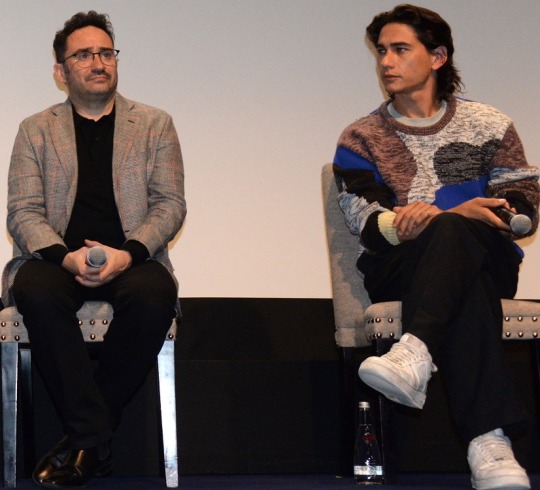
JA Bayona and Enzo Vogrincic
Society of the Snow is One of the Most Harrowing films of All Time – and Chilling As Well
by Brad Balfour
It’s an understatement to say that I’ve seen lots of films with varying degrees of frightening circumstances informing them. But Society of The Snow was one of the most harrowing – well deserving of award nominations, including the Oscar for Best International Feature. Though the film is fiction, it’s based on a true story and is done in such a way that you feel yourself actually experiencing the cold, anguish and pain as the story reveals itself.
In 1972, a Uruguayan rugby team chartered a flight to Chile, which catastrophically crashed on a glacier in the heart of the Andes. Of the 45 passengers on board, 29 survived the initial crash, although more would die from injury, disease, and an avalanche over the following weeks. Trapped in one of the most inaccessible and hostile environments on the planet, the survivors were forced to resort to survival cannibalism of those who had already died in order to stay alive. However, rather than turn against each other, the survivors drew upon the cooperative teamwork they learned through rugby, along with their spiritual faith, in order to escape the mountains. Only 16 of the 40 passengers ultimately survived.
Director JA Bayona discovered Pablo Vierci's 2009 account of the crash, La sociedad de la nieve, while conducting research for his 2012 film The Impossible. He bought the rights for the book when he finished filming that movie. Bayona recorded more than 100 hours of interviews with all of the living survivors. The cast is composed of Uruguayan and Argentine actors, most of whom are newcomers. The actors had contact with the survivors and the families of the victims.
Society of the Snow was the closing film at the 80th Venice International Film Festival, in an Out of Competition slot. It played in theaters in Uruguay, Spain and a limited run in the United States in December 2023, before streaming on Netflix in January 2024. Society of the Snow received positive reviews and won 12 awards including Best Picture and Best Director at the 38th Goya Awards and was nominated for Best International Feature Film, representing Spain, along with Best Makeup and Hairstyling at the 96th Academy Awards.
This Q&A with writer-director Bayona and star Enzo Vogrincic took place in front of an audience a few weeks before Oscar Night.
Society of the Snow was shot in sequence, which is so rare now. Also shooting on location with all the challenges. How important was it to you to have an Uruguayan voice to this film, this passion in your life for the last decade?
JA Bayona: This story is not only well-known in the Spanish-speaking world, but also [throughout] the whole world. There are many documentaries about it. There were two movies already done (ed note: Survive! in 1976 and Alive in 1993), so we had to do this one right. We spent the time, and we wanted to shoot in Spanish. There was no way to shoot this film in another language than Spanish with a Uruguayan accent, since it was based on a book by a Uruguayan author with a Uruguayan voice and a Uruguayan actor. It took us 10 years to find the financing, find a place where we were allowed to show up and believe in the film, and believe in the level of ambition we were looking for, again in Spanish. Once we knew the film was going to be done – actually before then – we did auditions for nine months, looking for the actors. I saw 2,000 self-made tapes, and from those, I started to choose faces and meet actors online, because it was during the pandemic. We finally got our cast. That was at the end of 2020. We did two months of rehearsals – which is a luxury – maybe seven weeks. Then, all the cast met the real people they were portraying or the families of the dead. Then we spent a very long shoot, 140 days, which was extraordinary. We created such a beautiful family. Everything that’s in front of the camera was real. The friendship, the love, the sense of camaraderie, and we were there with our cameras. We captured that.

Who was your continuity director? You've been recognized for makeup and hair. This was another-level continuity.
JA Bayona: I gave the actors a lot of space and freedom to improvise, because they were so well prepared. They spent two months in rehearsals, met the survivors, and read the book. They had all the information, and then they worked in similar conditions, with a context that was constantly stimulating the performance. There was a lot of space to improvise. We shot 600 hours of material. The heroes of this film are the editors because they had to deal with that. There were a lot of continuity issues that we had to deal with in the editorial.
Enzo, when it comes to rehabilitation in the hospital, the showers, the emaciated bodies – and being a 2024 film realist – it wasn’t body doubles. Your body weight went from 159 to 103 during the shooting of this film. That was real. How important was it for you, for the living and the dead, to honor your character?
Enzo Vogrincic: While we were making the film, as actors, we always thought we owed the people that survived and those that died, to tell their story as realistically as possible. Therefore, when we were filming things such as hunger or cold, we were barely able to move. It was a way of replicating what they had gone through, beyond our acting, because we knew that we had a responsibility to the people and to the characters. This was not a typical shoot whatsoever. It was part of the story, so fundamentally, we were willing to do whatever it took to get that realism in. After putting in 12 hours of filming and besides, we were eating very little, we found that we could set up a gym afterwards. At night, those of us who were not filming, we were training and continuing to lose weight.
How important was it to you that this project be delivered in a Uruguayan voice?
Enzo Vogrincic: This is something that was fundamental to us because this story has been told before, but not with our voice. I thought that was the key thing to do because – though some theories say we are human regardless of where we took place – but these were the stories lived and survived by actual Uruguayans. We thought that to be able to tell it in the original language, it was important for us to understand the tales of the survivors so we could tell the story better. There were terms, feelings, and all those things which mattered, because it hadn’t been done that way before.
There were scenes that involved faith, the notion of a higher power, permission from God. On the other hand, what kind of God would allow this? Those scenes were directed with great care. Tell us how you approached that?
JA Bayona: I always try to be as close as possible to the characters, to the reality, in order to be able to capture them with a sense of authenticity, a sense of place, of being there. These guys were, most of them, very religious. There was a lot of religious iconography. I like to think the film tries to be more spiritual than religious. I see these people like orphans, abandoned in a place where life is not possible, and they need to reinvent life. They need to, somehow, reconsider what is important and what is not, as human beings.
By doing so, the movie becomes a mirror of ourselves. They had to start everything from scratch. They were abandoned by the authorities, they were abandoned by their families, so they had to. For them, it was a journey of self-discovery. It was also a way of understanding that God was everywhere, in order to survive. There was not a religious institution in the middle.
When we mention cannibalism, when we talk about it, that's a word they don't like to use. I think this film makes a big change; in that it's not about taking. It's about giving, about giving yourself to others and suffering the same pain that they are suffering. By doing that, feeling empathy …understanding that you and the other person in front of you are really the same. It's like when Gustavo Zerbino told Roberto Canessa, "You have the strongest legs, you need to walk for us." [And he did just that, walking out from the crash down the mountain towards civilization until they were found, which saved everyone who remained.]
There's an immediate realization that you and the other ones are the same. We are all the same. To me, that feels sacred, spiritual and transcendent. To understand that we are all part of the same thing. That resonates in the world we live in right now, especially with young people. We are surrounded by so much conflict, and finally having this story that tells you that we are all part of the same thing, that we are all aboard the same plane. We need to come together to find a solution. We had such an important message. That was our fuel.
With today's GPS, the flight would have landed at its destination safely, one would hope. You had to get the technical details right. The formal report said it was pilot error. That's clear from your work. How challenging was that, starting with your visit to the crash site?
JA Bayona: We had to give the context to make others understand what they went through, and by doing so, what they did. We put so much effort into all the details, like talking about the type of plane. We went to the Uruguayan Army. We had a very honest conversation with them. They accepted that it was human error. But it was actually a combination of human error with some kind of an early model of GPS that failed that day. They basically had to do this turn there because that kind of plane was not able to fly at 40,000 feet. So they had to go through a lower pass. They had to do this kind of U-turn. It takes 20 minutes to get from one side to the other. They turned to the right only when they were six minutes into it. That's why it's considered to be a human error because there was no way that the pilot didn't know that. The pilot had done that journey many times. But we really don't know what happened in that cockpit. I decided to leave the camera outside of the cockpit out of respect for the pilots. We knew that there was a machine that failed there. But anyway, we decided out of respect not to get into that space, so we stayed with the other characters.
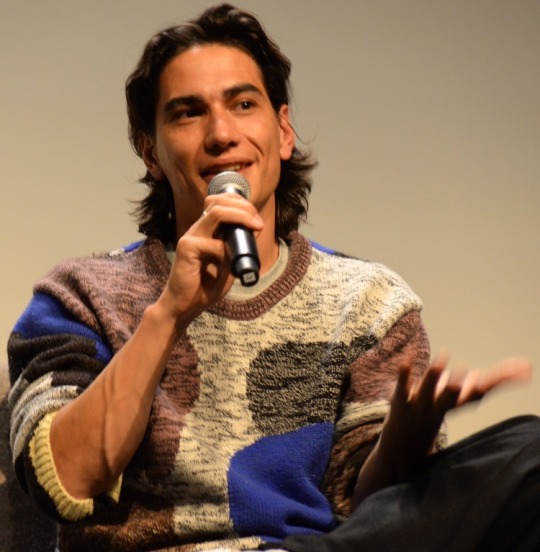
Will your life ever be quite the same after the experience of filming this movie?
Enzo Vogrincic: In life, everything you do changes you. You're never the same after an experience this informative. Of course, I’ve changed. I am different. I like to take every opportunity to continue changing myself. The biggest changes were on a professional level and in terms of how much I learned. I had to go in depth into my character and we spent one to three years with those people talking about life, death, friendship, love, family and making friends. I've made 25 new friends and therefore I like to think that I did change.
Talk about your immersion in your new extended family. The family of the living and the family of the dead.
JA Bayona: I sent an email to the survivors in 2011 and in that first email, I already sent a line about Roberto Canessa that said, “Talking to the dead, accepting peace, gives us the chance to live other lives we didn't have the chance to live.” I was very struck by that conversation between the living and the dead and that sense of depth towards the dead. The more I was in contact with the survivors and the more we talked, the more I realized that they needed the film to be completed and released even more than I did.
My big question was what was left to say after so many documentaries, books, and movies. Now I realize, after seeing the film with them, that it was not about telling something that wasn't being told yet. It was more about giving them the chance to say thank you to people who’d been so important. I see how it was like a poetic thing, the fact that people who didn't make it, they gave everything they had for these people to be alive. Now they are using their testimony to bring these people back, to keep them alive again on the screen. By doing so, I realized that they were comfortable with the story. So it was more about giving these folks a chance to say “thank you” to those who had helped while capturing the mood, feelings and context of what they had gone through so that people seeing the movie would understand what had happened.
In the hands of another director, the debate over sheer survival might not have been handled as beautifully as it was with you. There's a line in the script where Enzo’s character says, “What was once unthinkable became routine." As the black & white photos are being taken, there's a shot showing a human rib cage in the background, almost cavalierly, but it mostly was kept out of the photos. The pictures, of course, are still with us today. They're on the web for people to see. You've managed to take on such a life-and-death topic and deal with it matter-of-factly but with great respect and discretion.
JA Bayona: I'm so glad that you asked about that “unthinkable” line because that's life. That's life. First, you do what you think is impossible, then you get used to it, and then there's a moment that you don't pay attention to it. Our ordinary lives are about that. These people remind us how important every single detail is in our lives. It doesn't matter if your skin is black or white or if we’re American or Spanish. We each have our chance to live life. But when you meet these guys, you meet people who’ve been given an extra chance. That makes a big difference. Their story helps us realize that sometimes we complain and don’t appreciate what we have, the fact that we do have lives to live.
How cold did it get? At what altitude did most of the filming take place?
Enzo Vogrincic: Well, I have to admit, it was hard to tell this story. You feel you have to go through the pain yourself, in order to tell it well. The shooting was hard, obviously, because you have to connect the pain with your own body. We had to lose weight and experience the cold. You have to do it until your body becomes part of that character’s story. There were experiences that allowed us to feel the pain. We were able to work less on certain things and still retain the emotional tone of the story. The emotions didn’t take over necessarily when your body had to suffer. There were other important components, too, in addition to the pain and the suffering. You were able to see that you had a duty to carry out which took you beyond the pain, because you had a story to tell in a competent way.
JA Bayona: Let me add one story. Enzo did such an extraordinary job. He was so committed to the performance of Numa that when we finished the shoot we had to go back to the Andes because the first time we went, there had been very little snow because of global climate change. We went for one year. Once we finished the shoot, we went back to shoot again in the background. Secretly he was in Uruguay, and I called Enzo and said, “What are you doing next Wednesday?” He said, “Nothing.” I said, “I want to take you to the actual place where the plane crashed. I don't have permission from the other producers, but I think I can manage to bring you there. How much is the ticket?” He said, "$400.” I said, “Well, we can pay $400. I can talk with the insurance company and the professional drivers.”
I secretly took Enzo finally with the blessings from the other producers just because he did so much. We had this shoot then we had the person in Germany that was to do this film. I really wanted Enzo to be there and be able to shoot some shots that were very helpful for the film. You can treat the audience by putting in a couple of shots of Enzo there and there. At the same time, Enzo had a closure to that journey. He was able to do these shots but was also able to stand in front of the great theater. I don't know what you said there, what you did there, but you had your moment there. To me that was very important. When you do a film, the whole atmosphere affects the final result. I pay attention to these kinds of details. Also, I wanted him to be there and have that closure.
Having just shared this in a theater, I know that’s what movies are designed for, communal viewing experience. But when someone watches your movie on a streaming device. How does it affect you? And to be honest, can you interpret it for any language that it needs to be interpreted for?
JA Bayona: Can we take the Netflix people out of the room for a second? No, listen, we spent 10 years trying to make the financing for this film. We tried to do this film by conventional windows to the cinemas. Apparently, there is no market for Spanish films that are over $10 or $15 million in budget. We couldn't do this film with that budget. We spent 10 years and when we were about to give up, Netflix showed up and put in the money and gave us the freedom. They made the film possible.
At the same time, I come from Spain. To me, it's more difficult to handle the market in the US than in Spain. I'm quite popular there. We released the film on December 22nd. It was a limited release, 100 cinemas. Normally one of my films would be in 500 cinemas. We released the film in 100 cinemas. I decided to go with the film. Every week, I went to a different city and showed the film. The film is still in the cinemas, in the same number of cinemas. We've done 100 million admissions. The film actually is doing better since it's on Netflix. I'm very happy that Netflix made the film possible and made it accessible to the whole planet. We had 100 million people watching the film in the first 10 days. So it’s not true. There is a market for Spanish films. But I'm glad that the movie is still in theaters for people who want to see it there.
Copyright ©2024 PopEntertainment.com. All rights reserved. Posted: March 6, 2024.
Photos © 2024 Brad Balfour. All rights reserved.
youtube
13 notes
·
View notes
Text
Society of the Snow Review-A Remake of A Thirty Year Old Film Doesn't Make It Any Less Impressive
About 30 years ago or so there was a film called Alive directed by Frank Marshall and written by John Patrick Shanley that came out about a Uruguayan rugby team that crashed and landed their plane in the Andes Mountains in South America. It’s based on the book Alive: The Story of the Andes Survivors by author Piers Paul Read. JA Bayona, famous for directing his fair share of hit films, decided to…

View On WordPress
#Alive#Enzo Vogrincic#JA Bayona#Matias Recalt#Netflix#Peers Paul Reed#Remake#Society of the Snow#Subtitles#Survival Film
12 notes
·
View notes
Text
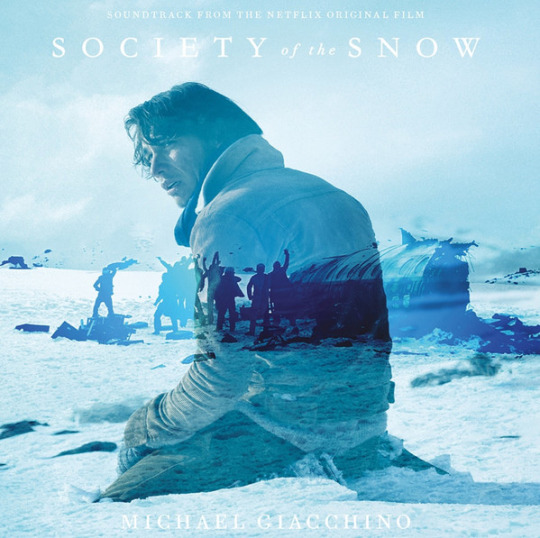
Society of the Snow ❄️
The 96th Academy Awards are upon us, with the 2024 Oscars taking place this weekend on Sunday, 10th March 2024 · Society of the Snow has been nominated for two Oscars, for Best International Feature Film, Not in the English Language as well as the best makeup and hairstyling. Society of the Snow became the third-most-prized film in Goya history after winning 12 awards at Spain's Goya Awards and winning a European Film Award but the interest is not just for the awards but for the true story behind this film/Thriller/Adventure documentary.
Directed by Juan Antonio García Bayona, the Spanish-language film is about the 1972 plane crash that stranded dozens of people–most notably players of an Uruguayan rugby team–on a glacier in the Andes. But it was Pablo Vierci’s Society of the Snow, a non-fiction account of the disaster, published in 2008 and made with the full collaboration of the survivors and their families, that caught Bayona’s interest. The film is an adaptation of Pablo Vierci’s book. The cast is composed of Uruguayan and Argentine actors, most of whom are newcomers.
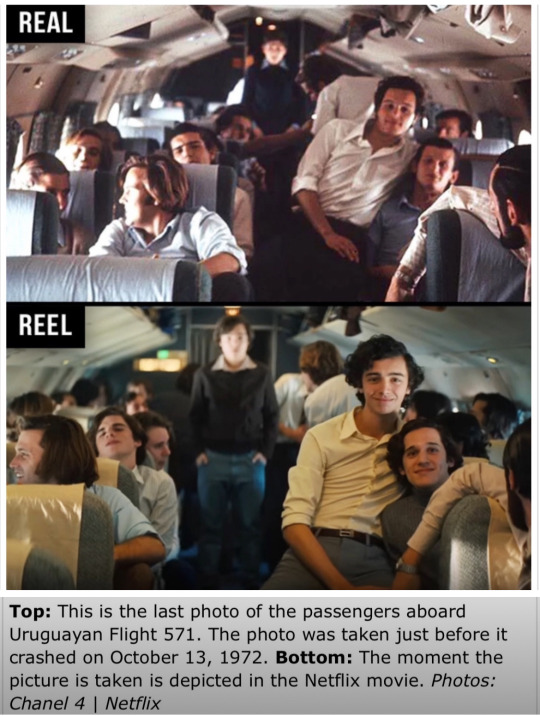
In case you have no idea about this film, please, let me explain: The rugby world knows very little about this story, so after watching the Rugby World Cup in France last year 2023 and seeing the resilience of the Uruguayan rugby team in the World Cup, I watched the film and read books getting more and more interested in the subject. The Snow Society tells the true story of Uruguayan Air Force Flight 571, a plane that crashed in the Andes in 1972, leaving a rugby team and its fans hungry and stranded for 72 days. There were 45 people on the flight, 40 passengers and 5 crew members. 19 of the passengers were members of the Old Christians Club rugby team.

Old Christians Club, or simply Old Christians, is a Uruguayan sports club from Carrasco, it is a neighbourhood of Montevideo. The club is known mostly for its rugby union team which became famous around the world due to the Uruguayan Air Force Flight 571 crash that involved the first division team of the club in 1972. Old Christians amateur rugby team charted a Uruguayan Air Force plane to transport the team's players, friends, fans and family members to Santiago, Chile, for an exhibition match.

It is Highlighted by one of the better plane crash scenes put to film in quite some time, Bayona, who also directed The Impossible (the criminally underseen survival pic about the extremely deadly 2004 tsunami), treats the audience to an immersive, detailed, and gritty look at how the young men who were eventually rescued from the icy slopes survived for nearly two months.
That's been dramatised many times before, most notably in 1993’s “Alive”, starring Ethan Hawke, but the director J. A. Bayona’s rendition may be the most immersive take yet.
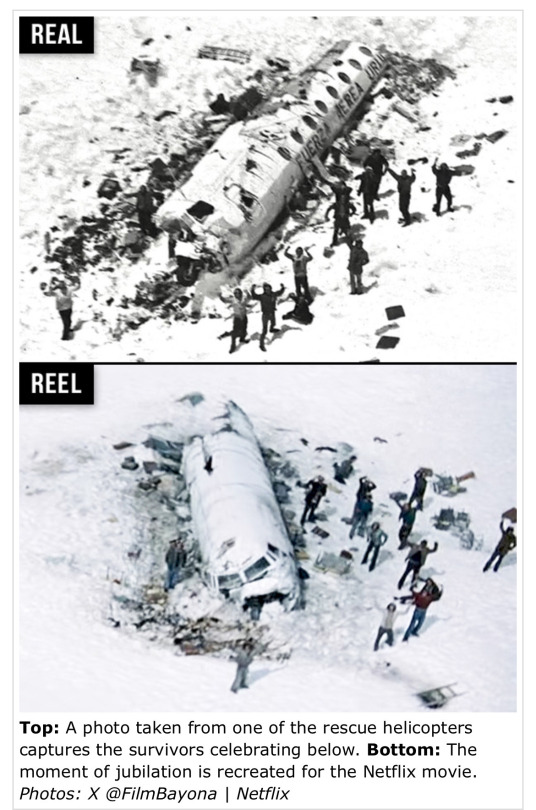
The crash scene is meticulously re-created—people being sucked out of the fuselage, bones shattering as the seats get ripped from the floor, bodies crumpling toward the cockpit. Most of the film takes place on the mountain range’s blinding snow-covered slopes, the victims’ skin bluish with frostbite, and the sound of howling winds incessantly. Almost every shot highlights the frigid, terrifying reality of what happened.
In my opinion, J.A.G. Bayona did an incredible job directing the film because I felt their stress and desperation, their fear and hope, and I feel this is one of those films that are a complete experience, one of those that makes you value everything you have and open your eyes. It’s a gruesome tale —the survivors eventually resorted to cannibalism— The survivors (and the not-lucky ones) became a life inspiration.
They wanted to live, they dreamed of living, they fought to live, they did EVERYTHING and more to achieve success, and thanks to those guts they wrote their story.

Society of the Snow is the Definitive Account of the World’s Greatest Survival Story. Waiting for a rescue team that didn't arrive, the survivors became fewer and fewer in numbers. Stranded alone on a glacier, they had to face brutal temperatures, lethal avalanches and the loss of friends and family with no access to supplies, food or water. In order to survive, they had to do the unthinkable. It wasn't until seventy-two days later that they were able to reach safety.
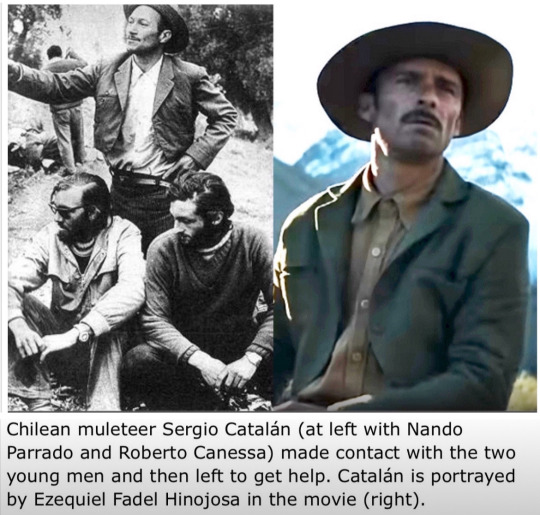
Eventually, two of the survivors – Nando Parrado and Roberto Canessa – were able to find help after embarking on an improbable hike into Chile, which took 10 days and saw them climb a 4,650-metre peak and travel 61km (37.9 miles) without any mountaineering gear.
Thanks to their efforts, the remaining team members were subsequently saved, and the incredible tale of survival became known as the Miracle of the Andes.
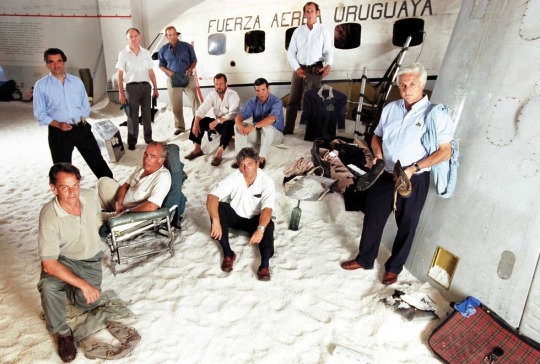
The Survivors- Sipa/Shutterstock
To increase the film’s realism, director J.A. Bayona decided to film footage at the actual crash site in the Andes, El Valle de las Lágrimas, which translates to The Valley of Tears (the name the location received after the tragedy in Chile).
The film's filming locations spanned the Catalan city of Terrassa, the rugged Sierra Nevada mountains in Spain, and the formidable Andes mountains, adding to the cinematic allure of the survival tale.
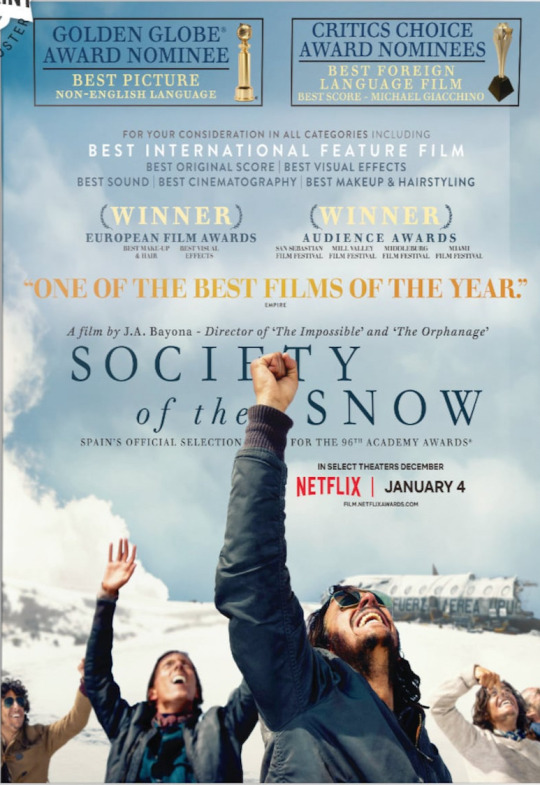
Society of the Snow appears to be a smash hit with both the critics and audiences, and is certainly one of the best Netflix films of recent times – it has a 90% Rotten Tomatoes score and 83% audience rating. If you haven't seen it yet, then I highly recommend you give it a go.
The Oscars are about to begin. The Dolby Theater in Los Angeles is already rolling out its red carpet.
youtube
#SocietyoftheSnow #JAGarcíaBayona #Director #96thAcademyAwards #Oscar #Spain #film #BestInternationalFeatureFilm #PabloVierci #Spain'sGoyaAwards #EuropeanFilmAward #Thriller #Adventure #documentary #Rugby #Uruguayanrugbyteam #Spanishlanguage#book #OldChristiansClubrugby #UruguayanAirForce #Flight57 #World’sGreatestSurvivalStory #MiracleoftheAndes
@brian-in-finance Yeah! Survivors of the Andes (1976) (Supervivientes de los Andes ) was a Mexican film directed by René Cardona, based on the 1973 book Survive! by Clay Blair, which is based on the story of Uruguayan Air Force Flight 571. The film received negative criticism, not a top budget film but still they could have put in a little more effort than what they did a very poorly done.
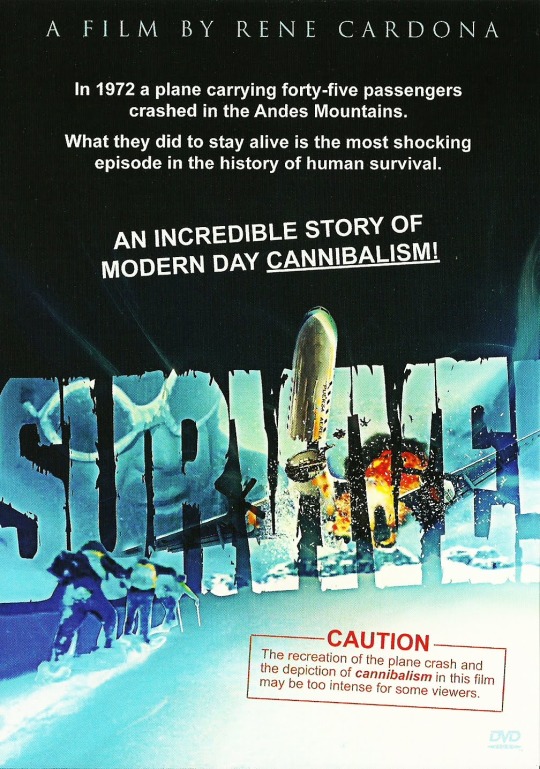
8 notes
·
View notes
Text
Every Trick in the Book
"The Nature of the Beast": Animal Farm
"Communion of the Cursed": The Exorcist
"Bloodbath & Beyond": Dracula
"The Plot Sickens": Alive: The Story of the Andes Survivors
"Star-Crossed Enemies": Romeo and Juliet
"Me, Myself & Hyde": The Strange Case of Dr. Jekyll and Mr. Hyde
"Alice": Go Ask Alice
"The People in the Attic": The Diary of a Young Girl
"Tess-Timony": Tess of the D'Urbervilles
"Hell in the Hallways": Carrie
The Silver Scream
"The American Nightmare": A Nightmare on Elm Street
"Thank God It's Friday": Friday the 13th
"Stabbing in the Dark": Halloween
"SAVAGES": The Texas Chainsaw Massacre
"The Jig is Up": Saw
"A Grave Mistake": The Crow
"Rocking the Boat": Jaws
"Enjoy Your Slay": The Shining
"Freak Flag": The Devil's Rejects
"The World in My Hands": Edward Scissorhands
"Merry Axe-Mas": Silent Night, Deadly Night
"Love Bites": An American Werewolf in London
"IT is the End": IT
"Your Number's Up": Scream
The Silver Scream 2: Welcome to Horrorwood
"Hip to Be Scared": American Psycho
"Assault & Batteries": Child's Play
"Rainy Day": Resident Evil
“Funeral Derangements”: Pet Sematary
"A Rash Decision": Cabin Fever
"The Shower Scene": Psycho
"Take Your Pick": My Bloody Valentine
"The Box": Hellraiser
"F.L.Y.": The Fly (1986)
"Wurst Vacation": Hostel
"Ex-Mørtis": Evil Dead
"Farewell II Flesh": Candyman
"Meat & Greet": The Silence of the Lambs
youtube
#music#horror enthusiast#great albums#literature#horror movies#endorphins#ice nine kills#spencer charnas#Youtube
6 notes
·
View notes
Text
got tagged by @anthonymire
last song: the grammy performance of fast car by tracy chapman and luke combs
favorite color: dark red or teal blue
last movie/TV show: the last movie i watched was dumb money but that was over a week ago. last tv show was grey's anatomy bc i've just had it on in the background while doing other things
sweet/spicy/savory: unmentioned fourth option: salty
relationship status: single but there's a guy at work i look forward to flirting with so that's nice
last thing i googled: uh, earlier today i was trying to figure out how to remove the faucet handles so i could clean them. learned a new skill!
current obsession: still the terror probably
last book: last book i finished was the talented mr. ripley over winter break, but right now i'm nearing the end of alive: the story of the andes survivors.
looking forward to: getting my 9AM meeting over with tomorrow. i don't want to start my day like this so i just need to knock it out and move one.
tagging: @crazyassmurdererwall, @valleydean, @woodchoc-magnum, @telvayns, @tattooedsiren, @tripleaxeldiaz, and anyone else who wants to do this
#i am also looking forward to the rest of my apartment being clean#but it's gonna take me a few days at this rate lol#tagged in
7 notes
·
View notes
Text
While I think that analyzing yellowjackets in relation to Lord of the Flies and other plane crash MEDIA is reasonable, I think that it’s doing it a disservice not to analyze it with the Uruguayan rugby crash of 1972 in mind.
This video by ask a mortician is a great intro for us younger folks who didn’t grow up with the info
youtube
Part of the way that those survivors conceptualized the cannibalism was by comparing it to the Last Supper and Jesus Christ, because they were Catholic. They never killed anyone, of course, and they never lied about any of it. But the media still hounded them, and we’re still obsessing over the survivors 50 years later. The culture pretty collectively decided that they made the right decision, but that sort of attention… I’m sure it’s still suffocating to have the entire world know about your taboo actions, even if you’ve made peace with them and the world has mainly come up in support of them.
And it’s also important to remember that they stayed… “civilized”. They DIDN’T hurt each other in a lord of the flies manner. They never killed people to eat them. They also DIDN’T create intricate rituals around the cannibalism aside from drawing them into their own religious and cultural framework. (The soul has left the body, comparing it to the last supper and the Eucharist)
Even though the yellowjackets are fictional, if they were real, would they have been reviled? Well. They wouldn’t be celebrated, not the least because they hate themselves for it. The would think they deserve any and every bit of vitriol if they were honest, and keeping it under wraps is only making the scrutiny of the fictional crowd worse.
As an extension, are we, as viewers, still eating the trauma of the Andes survivors just by participating in a show that’s clearly inspired by that? Where does spectating become voyeurism? Do the people deserve to know “the truth” about everything? Even the Andes survivors didn’t offer up the “confession” of the cannibalism until pressed by doctors to explain how they weren’t walking skeletons.
That information, that highly personal trauma and violation of one of society’s biggest taboos was pried out of them. They weren’t ashamed, but the media and society still COULD have been nasty if they didn’t decide on the “inspiring story” angle.
Is the way that the media turned the Andes team into saints really a good thing? Sure, it’s better than the demonization that might have come their way otherwise, but that is a LOT of pressure to wear on your shoulders for a very long time, just to ensure that the tide of public opinion doesn’t turn on you.
These fictional girls went through something terrible too, both during the crash and after. They survived, which is so often hailed as a virtue in and of itself, but the actions that led to that would have to be sanitized and sanded off to make them fit for public consumption. The girls themselves haven’t processed the trauma of their cannibalism, so they certainly can’t stand their ground the way that was expected of the Andes survivors. If the Andes survivors were deeply ashamed of their actions would the world have met them with the same kindness? (I don’t know) especially if they hadn’t done so in a way that was so easy to market as just.
Which leads us back to the press and society in yellowjackets. “How did you survive? What DID you do to make it out there? What secrets are you hiding and how can we force them out of you?” How are they supposed to live with this while they’re burying every bit of it and letting the shame eat them alive so that society doesn’t?
No matter how much we as a society and collective devour or create or valorize or ridicule people, real or fictional, I don’t think we’ll ever get their experiences, or how to maintain that thin line between compassion and accountability.
32 notes
·
View notes
Text
oh god i just read about the human skin socks
"They knew from earlier expeditions that the chief problem which would face them was the insulation of their feet against the cold. They had rugby boots, and Vizintín had prized from a reluctant Harley the stout shoes that Nicolich had been given by his novia, but they had no thick socks. Then they came up with the idea that they should provide their feet with an extra layer of fat and skin from the dead bodies outside. They found that if they made two incisions--one in the middle of the elbow, the other in the middle of the forearm--pulled away the skin with its subcutaneous layer of fat, and sewed up the lower end, they were left with a rudimentary pair of socks with the dead skin of the elbow fitting neatly over the live skin of the heel."
Alive: The Story of the Andes Survivors, Piers Paul Read
8 notes
·
View notes